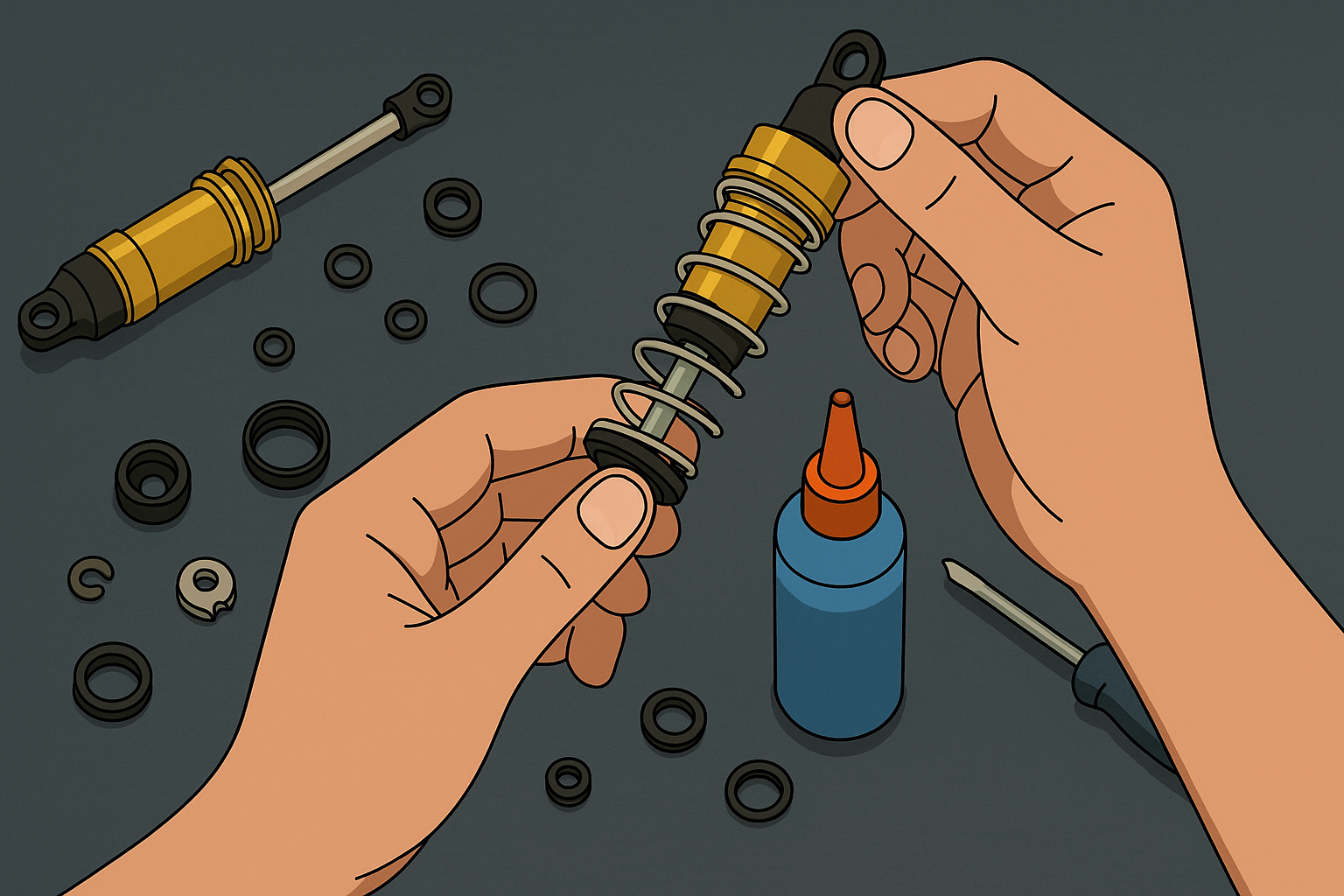Tuning your RC car’s suspension can make a massive difference in how it handles jumps, corners, and rough terrain. One of the most critical and often overlooked tuning options is shock oil weight. Whether you're racing, bashing, or crawling, adjusting your shock oil viscosity can improve stability, traction, and overall performance.
Here’s a practical guide to help you understand when and how to adjust shock oil weight for your off-road RC car or truck.
What Does Shock Oil Do?
Shock oil flows through pistons inside the shock body, providing damping resistance. The thicker (heavier) the oil, the slower the shock moves. The thinner (lighter) the oil, the faster it reacts.
This controls how quickly your suspension compresses and rebounds, affecting:
-
Traction
-
Jump landings
-
Chassis roll
-
Handling over bumps
Choosing the Right Shock Oil Weight
Shock oil is measured in either cSt (centistokes) or WT (weight). While both measure viscosity, cSt is more precise. Most hobby-grade RC brands now list shock oil in cSt.
Common Starting Points:
-
1/10 buggy or SCT: 350–450 cSt
-
1/8 buggy or truggy: 450–600 cSt
-
Rock crawlers: 20–40 WT (approximately 200–400 cSt)
When to Use Heavier Shock Oil
Use thicker oil (higher cSt) to slow down your suspension. This is ideal when:
-
You're driving on high-grip tracks (astro, carpet, blue groove clay)
-
You want to reduce chassis roll in corners
-
You’re hitting big jumps and want better landing support
-
The weather is hot, since oil thins out with heat
Benefits:
-
Increased stability at high speeds
-
Less chassis bounce on landings
-
Improved cornering on smooth, grippy surfaces
When to Use Lighter Shock Oil
Use thinner oil (lower cSt) to speed up your suspension. This is useful when:
-
You’re on loose, rough, or bumpy terrain (loam, dirt, grass)
-
You need better tire contact and traction
-
It’s cold outside, since oil thickens in low temps
-
The car feels too stiff or skittish
Benefits:
-
Improved grip and responsiveness
-
Smoother ride over rocks and ruts
-
Better bump absorption and rebound on uneven terrain
Front vs. Rear Tuning
You don’t always need to change all four shocks equally.
-
Stiffer front: More responsive steering, less dive under braking
-
Softer front: More front-end traction, better bump handling
-
Stiffer rear: Less squat on acceleration, more stability
-
Softer rear: More rear grip, can help rotation in corners
Pro Tips for Tuning
-
Adjust in small steps — Try 50–100 cSt changes at a time.
-
Match your driving style — Aggressive drivers may prefer heavier oil for more control.
-
Check track temps — Hot weather thins oil, cold weather thickens it.
-
Balance with springs and pistons — Shock oil works with spring rate and piston hole size. Stiffer springs may need thicker oil to balance.
Final Thoughts
Tuning shock oil is one of the easiest ways to fine-tune your RC car or truck’s handling. A few drops of the right viscosity can turn a rough ride into a smooth and confident performer. Whether you're racing for podiums or just trying to clear that triple jump, your suspension setup matters.
Experiment, take notes, and don’t be afraid to adjust based on the track conditions. Your off-road RC rig will thank you with better control, faster lap times, and more fun behind the wheel.

